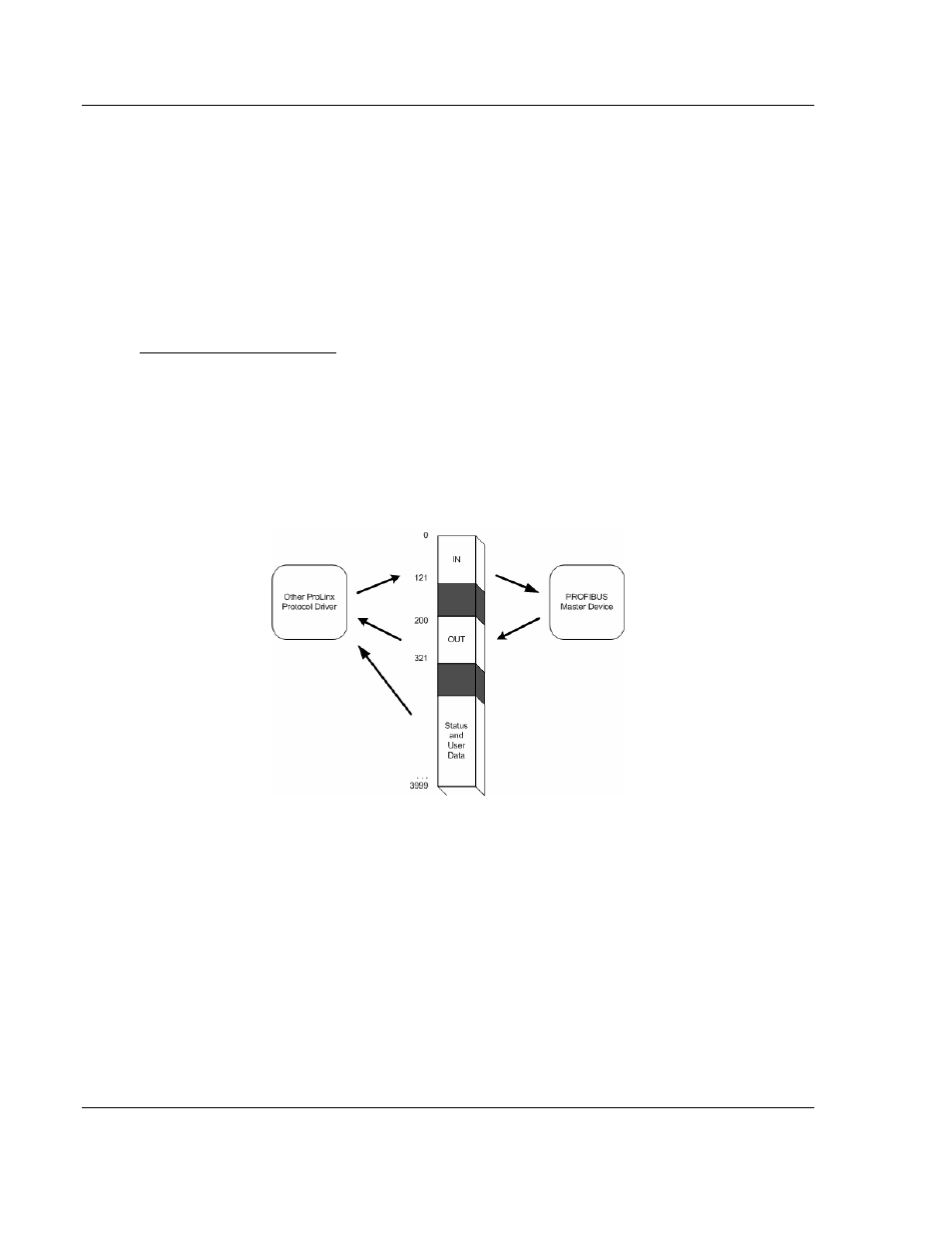Pdps protocol implementation, Functional overview, Module internal database – ProSoft Technology 5205-104S-PDPS User Manual
Page 62: Profibus slave port access to database

4205/5205-TS-104S-PDPS ♦ ProLinx Standalone
Protocol Implementation
IEC-60870-5-104 to PDPS Communication Module with Time Stamp
Page 62 of 128
ProSoft Technology, Inc.
July 12, 2007
2.3
PDPS Protocol Implementation
2.3.1 Functional
Overview
The PROFIBUS slave protocol driver may exist in a single port implementation.
The driver can be configured as a slave interface with other PROFIBUS devices.
The PROFIBUS slave port can be used to continuously interface with other
PROFIBUS devices over a serial communication interface (RS-485).
Module Internal Database
Central to the functionality of the module is the internal database. This database
is shared between all the ports on the module and is used as a conduit to pass
information from one device on one network to one or more devices on another
network. This permits data from devices on one communication port/network to
be viewed and controlled by devices on another port/network. In addition to data
from the slave port, status and error information generated by the module can
also be mapped into the internal database.
PROFIBUS Slave Port Access to Database
The Slave driver uses the database in two ways:
1
A read command issued to a slave device by the slave driver will return the
slave data into the internal database.
2
A write command issued to a slave device by the slave driver uses the data in
the internal database to write to the slave device
